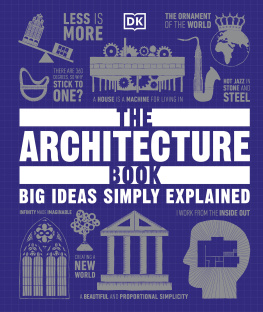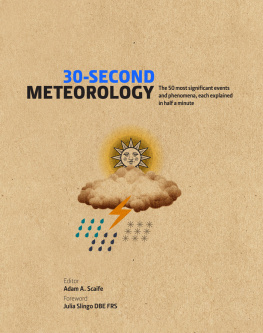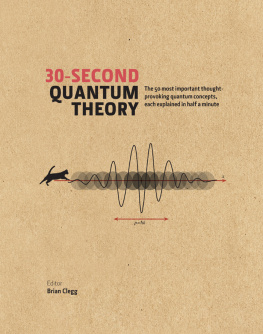
30-SECOND
ARCHITECTURE
The 50 most significant principles and styles in architecture, each explained in half a minute
Editor
Edward Denison
Foreword by
Jonathan Glancey
Contributors
Dragana Cebzan Antic
Nick Beech
Marjan Colletti
Edward Denison
Anne Hultzsch
David Littlefield
Steve Parnell

First published in the UK in 2013 by
Ivy Press
210 High Street, Lewes,
East Sussex BN7 2NS, UK
www.ivypress.co.uk
Copyright 2013 by Ivy Press Limited
All rights reserved. No part of this publication may be reproduced, stored in a retrieval system, or transmitted, in any form or by any means, electronic, mechanical, photocopying, recording or otherwise, without prior written permission from the publisher.
This book was conceived, designed and produced by
Ivy Press
Creative Director Peter Bridgewater
Publisher Jason Hook
Editorial Director Caroline Earle
Art Director Michael Whitehead
Designer Ginny Zeal
Illustrator Ivan Hissey
Profiles Text Viv Croot
Glossaries Text Simon Smith
Project Editor Stephanie Evans
ISBN: 978-1-78240-069-1
Colour origination by Ivy Press Reprographics
10 9 8 7 6 5 4 3 2 1
CONTENTS
FOREWORD
Jonathan Glancey
Architecture and building are almost but not quite one and the same thing. There would be no architecture without building, yet architecture attempts to raise the act of putting two bricks together well into the realms of Art. From the beginning of civilization, whether in the form of Sumerian ziggurats or Egyptian pyramids, architecture was a means of representing human dreams, hopes and fears in three solid dimensions. A temple was always a more ambitious creative endeavour than a barn or cowshed, even if such agricultural buildings could be special things in their own right.
Ever since, architects have been a priesthood of sorts, shaping temples, whether to gods, God, Mammon, their patrons, and, in many cases, themselves. From the smallest house to the most ambitious museum or skyscraper, architects have been temple-builders. Indeed, in recent years, architecture has become as flamboyant as it ever was partly because new materials and computer software allow architects to build wild dreams, but also because architecture itself remains such a powerful and visible expression of human vanity, aspiration and ego. As for Imhotep, the first architect we know by name, he designed the first Egyptian pyramids and became a god; architects have thought highly of themselves ever since.

An edifice of ingenuity
The development of the dome during the Renaissance allowed for large, clear-span structures that were artistic and engineering masterpieces.
Architecture is an adventure. Buildings provide shelter and serve purposes, yet architecture has often pushed the limits of what such shelter might be. The Pantheon in Rome, one of the worlds first great domed buildings, was nothing less than the Emperor Hadrians model of the universe. The Gothic cathedrals of medieval Europe matched a sense of spiritual jubilation with bravura structural engineering and skilled masonry. Le Corbusiers soaring, numinous pilgrimage chapel at Ronchamp, consecrated in the mid-1950s, was a match for any ancient place of worship in terms of design and religious atmosphere. Babel-like skyscrapers continue to rise ever higher, pushing the boundaries of materials, design, engineering and human daring.
Architecture has its own language, one that can be read in the faades of Greek temples, Georgian terraces and Guggenheim museums. A building, a street, or an entire city centre can be read like a book. The more you understand architecture, the richer a walk through any town or city becomes.
Not all architecture is sensational. And yet, in the many millions of quiet buildings designed by architects through the centuries, it is possible to detect something of the same intensity of design, and the will to create Art, found in the most ambitious temples. A modest Georgian terrace embodies the proportions and visual intelligence of the noblest Greek and Roman monuments.
However we choose to build in the future, and whatever our concerns about the environment, architecture will continue to play its role. We can build very quickly today and it would be easy to smother the planet in cheap and characterless buildings and to an extent this is happening but architecture is driven by dreams as much as by everyday concerns. Unlike building, it cannot be hurried. And, when we find a moment to stop and look up at a fine building, we see clearly just why architecture matters: it is our own human spirit, willed into stone and space.
INTRODUCTION
Edward Denison
Architecture is many things to many people. To some it is the ultimate art form, while to others it points towards science. But to many, it is simply about building or merely a matter of style. And in a digital age, to those more acquainted with constructing virtual worlds than real ones, architecture has nothing to do with buildings at all. Whatever our preconceptions, architecture is unique among art practices. First, it has to function and, second, it is particularly slow in its creation and appreciation.
It is ironic, then, that this slowest of arts should be given swift treatment here in 30-second portions. But this book attempts to explicate this unique artform through 50 key characteristics, from its origins in primitive building to its future in the virtual realm of advanced computer-aided design, or CAD. Each of the seven chapters concentrates on specific themes in architecture, exploring a wide range of topics across history, theory and practice.
This journey starts with architectures Foundations, when the time-honoured practice of building, whether basic vernacular shelters or magnificent structures of stone, was transformed by the formal conventions of architecture prescribed by the Roman engineer and architectural primogenitor, Marcus Vitruvius Pollio. The structural elements that are fundamental to the development of architecture are the subject of the second section, which explains Key Innovations, including the arch, the beam, the column, as well as more advanced and complex structures such as the dome, the vault and the frame.
The third and fourth sections explore fields of architectural theory and practice. Architectural representation is the focus of Projection in section three, which examines the significance of the plan, section and elevation, as well as the notions of scale, symmetry and perspective. Section four concentrates on key Theories and Concepts that have influenced the course of architecture, whether centuries-old, like the golden ratio, or more recent, like those that emerged from the Modern movement in the 20th century and consequent reactions to it.

Next page












